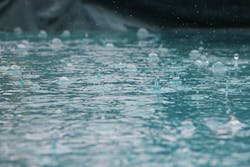What is so special about smart water?
Smart water refers to a movement in the water industry involving emerging technology that includes hardware, software, and analytics to help water water and wastewater utilities target solve problems through automation, data gathering and data analysis.
According to WEF, smart water is potentially a solution to issues including leak detection, water efficiency, energy efficiency, water quality improvements and more. Smart water technology provides a platform for more efficient technology use and more informed decision making.
The need to optimize data security and result accuracy has contributed to the interest in smart water in addition to the challenges posed by the Coronavirus Pandemic of 2020, notably social distancing rules and the encouragement of remote work.
Who creates smart water technologies?
There is a collaborative effort to create smart water innovations by water utilities, technology companies, hardware, and software companies. Companies such as Sensus, Mission Communications, Mueller Water Products, and Badger Meter have all emphasized the discussion on smart water from different angles. From the evolution of leak detection systems to meters collecting and analyzing flow data and SCADA platforms displaying data-rich information for improved insights, smart water takes on many forms.
Since digital and smart solutions have become more integral to regular operations and maintenance, a rise in the adoption of smart water technologies followed suit. The solutions are seen as a means to fill the knowledge gap between legacy knowledge and new industry professionals, while also providing avenues to better understand current processes for optimization of water and wastewater treatment systems.
Who benefits from smart water?
Ideally, everyone should benefit from smart water. Utilities would ideally gain optimal systems that allow them to focus operational expenses in other areas of criticality. Manufacturers gain the confidence to innovate and develop new technologies for the industry using data to guide what works and what doesn’t. Engineers gain the opportunity to better serve their clients, and residents of a network using smart water will receive better insights into their water use.
Additionally, when talking about smart water, conversations on addressing the most vulnerable populations of a community become critical. Water equity, water affordability and water access are inextricably linked to smart water technologies, which can used to overcome problems and challenges faced by those vulnerable communities. The technology can provide insights into water use strategies, pipe leaks in the community and operational inefficiencies that may aid those communities in receiving clean and affordable water..
According to a report written by the US Water Alliance about New York’s Buffalo Water Equity Task Force, water policies and practices must serve the needs of vulnerable residents. If this does not happen, the community has not reached its full potential.
“Water challenges are deeply connected to spatial, economic, environmental, and social conditions,” stated the report. LIsten to an interview with OJ McFoy, Buffalo Sewer Authority general manager, about the importance of their water equity task force and what it means for his utility and the community he serves.
Further, the US Water Alliance explains that addressing these disparities in water systems is the key to a more sustainable and equitable future.
What challenges can smart water alleviate?
According to the US Water Alliance, there are several challenges municipalities face that smart water can address, including:
- Maintaining and expanding water infrastructure;
- Water distribution system leaks;
- Rising energy costs;
- Rate affordability for customers; and
- Emerging water contaminants.
Smart technologies can chart meter data to find leaks in water networks, create optimized pressure zones for energy efficient distribution, discover and treat emerging contaminants with greater data accuracy and transparency, and develop preventative and predictive maintenance plans using a data-driven approach.
What smart water technologies exist?
Smart water technologies leverage big data, analytics, and the Internet of Things, according to Bluefield Research. A few examples of smart water technology in practice include:
- Using imaging to inspect corroding pipes;
- Analyzing data in real-time to identify leaks;
- Using pressure and flow data to identify pipes for rehabilitation or replacement;
- Using advanced metering infrastructure (AMI) to gather water use data;
- Measuring and charting water quality parameters for improvements in the treatment process; and
- Leveraging software to help utilities and consumers track home water usage.
Smart water technologies can detect abnormalities including non-revenue water (NRW) losses and water contamination in water distribution systems.
What is Smart Water Metering?
Smart water metering allows utility companies to collect data faster and more efficiently. IHS Markit forecasts almost 50 million smart water meters will ship globally in 2023.
Advanced metering infrastructure (AMI) captures flow data at the point of use and throughout out areas of a distribution system. That data can be used to identify irregularities in flow of the system or water use for a resident, which may result in the discovery of a leak.
Additionally, the data capture at the point of use can be provided to a resident in a water use report to show them how efficiently they are with their water compared to neighbors or other efficient users.
The data may also be used by the utility to optimize pressure zones throughout the drinking water network. If a community has a residential portion that is primarily vacation homes that use very little flow during a portion of the year, pressure in that zone of the network can be adjusted around peak flow months to optimize energy use of lift stations and pumps in the distribution network.
